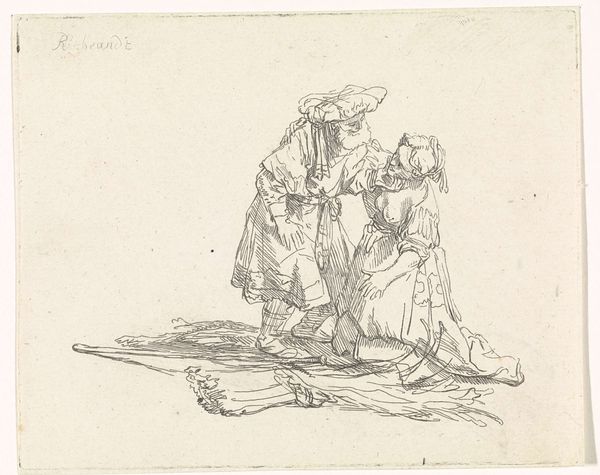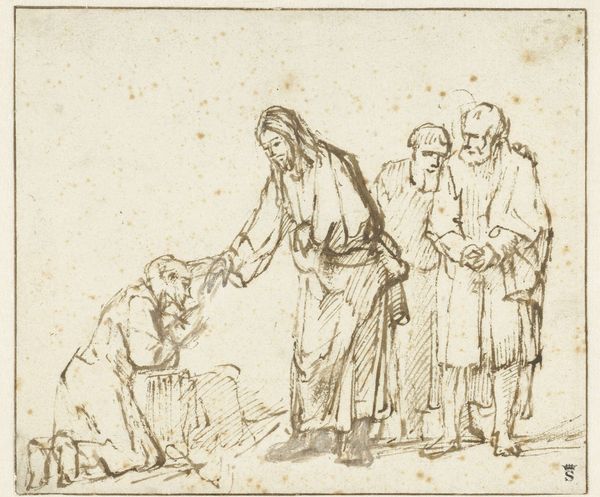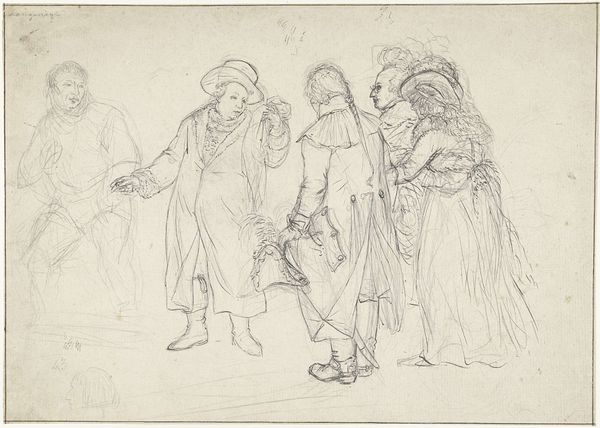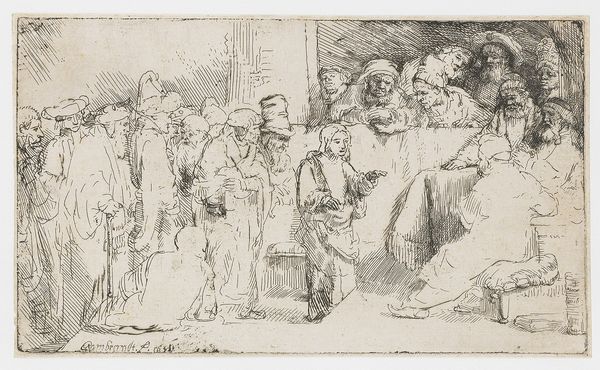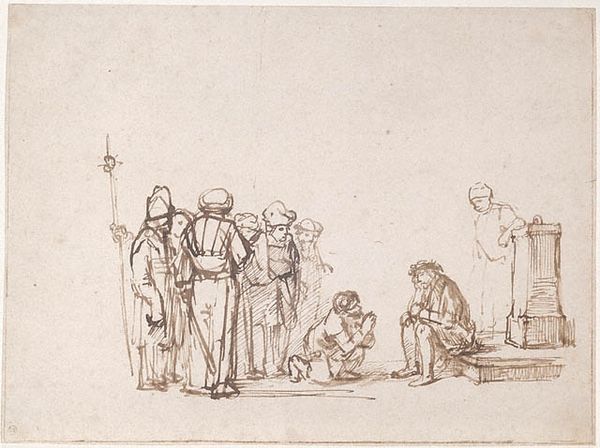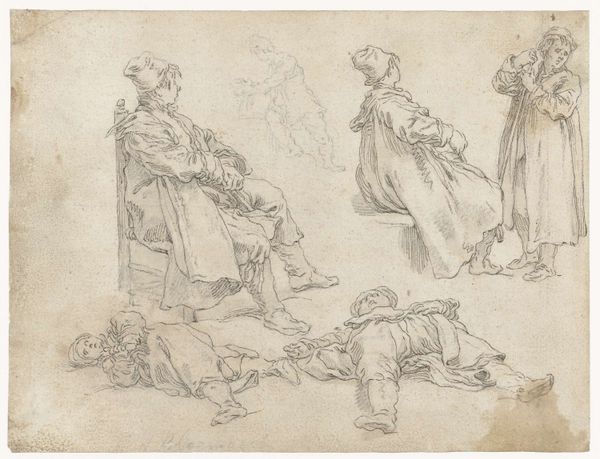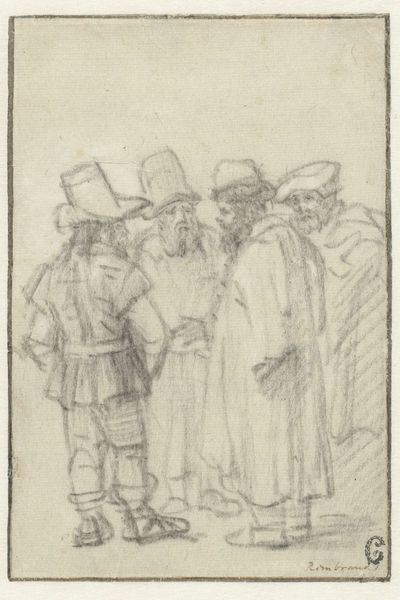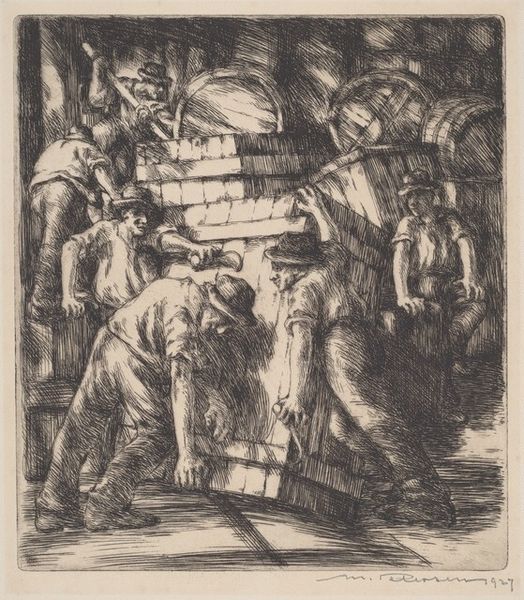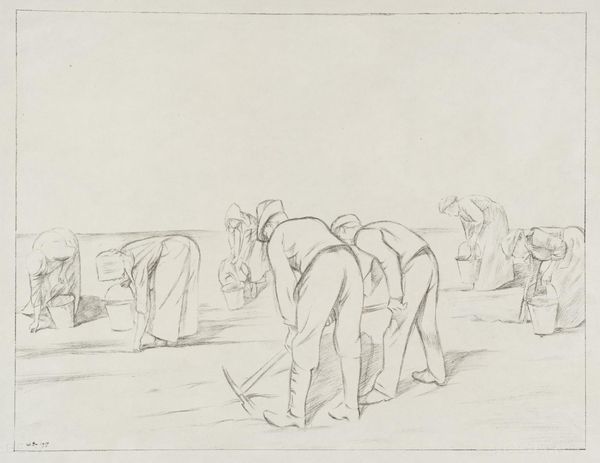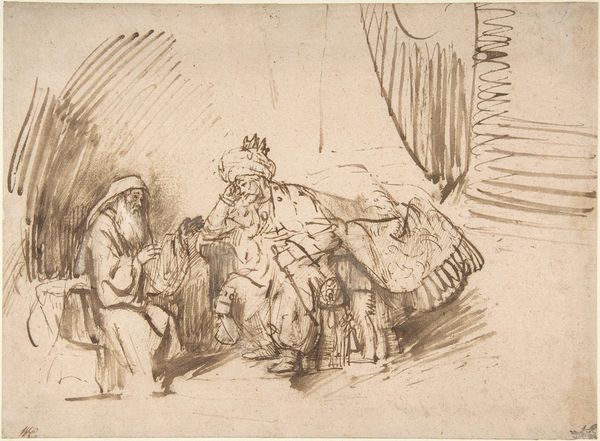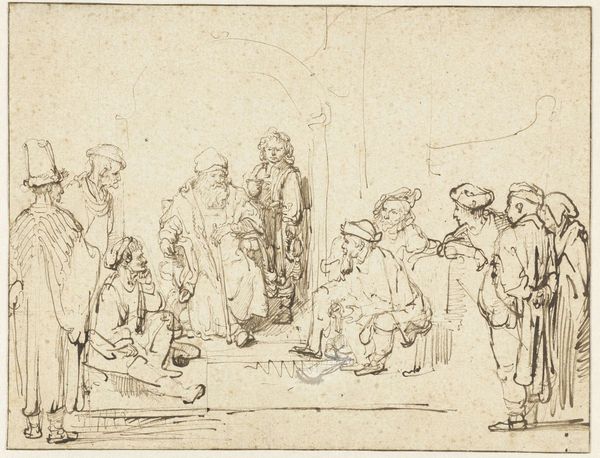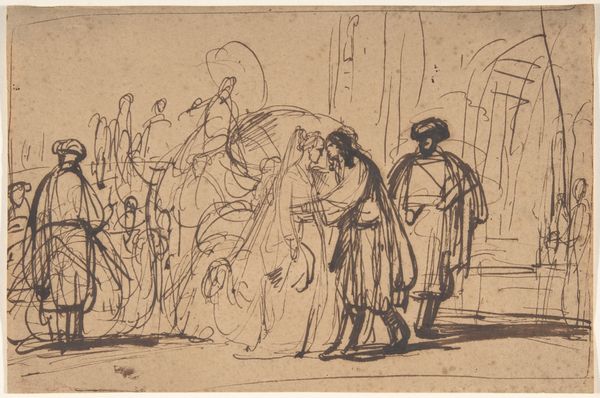
Copyright: Public Domain: Artvee
Curator: Looking at Jean-Louis Forain’s etching from around 1915, titled “The Notables,” one can’t help but feel a palpable sense of foreboding. The stark lines and somber mood immediately evoke feelings of anxiety. Editor: Indeed. It's fascinating how the artist captured such raw emotion using what appears to be a relatively simple technique. It hits you viscerally, the weight of oppression, even before you start to analyze the scene. The fleeing refugees and the aggressive soldier, all rendered in those frantic lines, are not specific figures; they are archetypes in a broader war narrative, each performing in a theatrical tableau of cruelty. Curator: Forain created this work during World War I, and its historical context deeply informs its interpretation. The piece directly reflects the socio-political upheaval and widespread displacement of that era. We need to understand it as a reflection of his critical perspective on the power dynamics and the vulnerability of civilians caught in the conflict. What choices, indeed, did the artist make when depicting such uneven relations of authority? Editor: I agree, the figures seem carefully posed, as if performing assigned social roles: victims and persecutor, sacred individuals, mothers and children. Note how the artist places these 'notables,' likely representatives of spiritual and familial life, directly behind the terrified children. And how are they helping? It critiques how these roles are rendered meaningless under duress. But it can be tricky. Some critics argue this risks creating simplistic moral narratives or fetishizing victimhood. What’s your view? Curator: I'm very interested in that argument, I believe that this is how it shows its complexities in terms of identity. Who do these fleeing persons identify as in this landscape of conflict? Their social categories of mother, priest, and child all fall apart in the war scene and force a kind of reckoning of survival itself. I don't think we need to reduce it to merely suffering; the painting asks about identity and agency in war. Editor: Ultimately, Forain leaves us pondering not just the immediate horrors of war but its lingering effects on individual and collective identities. The impact on viewers echoes across time, demanding ongoing ethical engagement with representation itself. Curator: Absolutely, and that's the ongoing relevance of a piece like "The Notables"—it compels us to think critically about the interplay between art, war, and identity today.
Comments
No comments
Be the first to comment and join the conversation on the ultimate creative platform.
